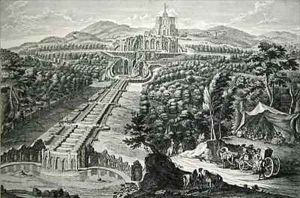Finck or Fuenck, Georg Paintings
Georg Finck, also known as Georg Fuenck, was a German composer and organist who lived during the Renaissance period. Information about his early life is scarce, but he is believed to have been born around 1480. His contributions to the musical landscape of the time were significant, although not as well-documented or remembered as those of some of his contemporaries.
Finck held various positions throughout his career, which allowed him to influence the musical practices in different regions of Germany. He served as an organist in the town of Bamberg and later held a position in the Saxon court chapel in Dresden. His tenure in Dresden was during the reign of Duke George the Bearded, a patron of the arts and a staunch Catholic who resisted the Protestant Reformation.
Georg Finck's musical style was typical of the period, characterized by intricate polyphony and the use of modal harmony. His compositions include sacred works such as masses, motets, and hymns, as well as secular pieces. One of his notable contributions to music was the development of the German tenor Lied, where the tenor voice holds the melody while other voices weave around it in complex counterpoint. This form would later influence the structure of the Lutheran chorale and the work of future German composers.
Despite his importance during his lifetime, Finck's music was somewhat overshadowed by the works of other Renaissance composers. The lack of surviving records and publications has resulted in a limited modern understanding of his full impact on the music of the time. Nevertheless, his role as a bridge between the late medieval period and the early Baroque era, especially in the context of German music, is acknowledged by music historians.
The exact date of Finck's death is unknown, but references to his work and life suggest that he was active well into the mid-16th century, with the latest records indicating his presence after 1550. The lack of concrete information about his later years makes it difficult to trace his final endeavors or to mark the precise year of his death.
